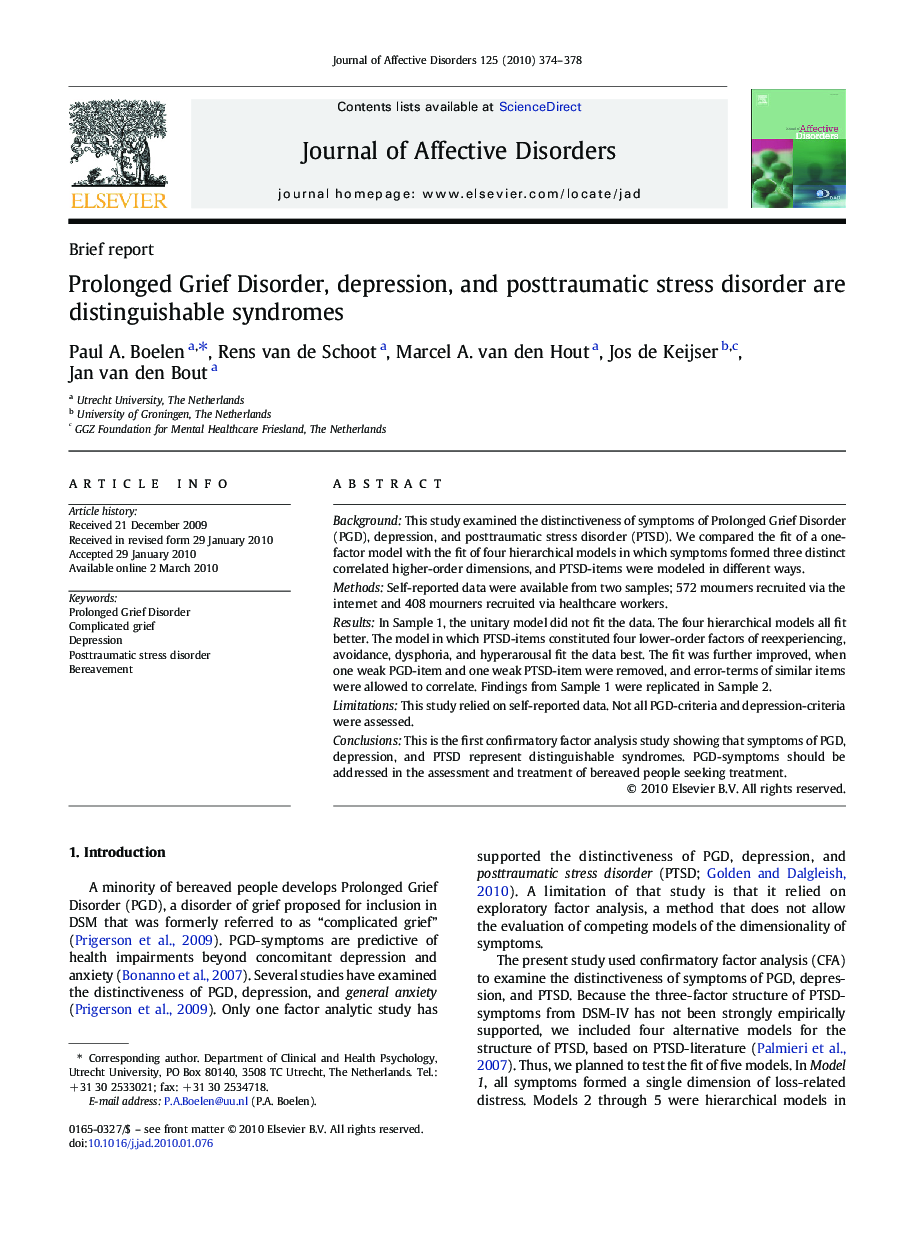| Article ID | Journal | Published Year | Pages | File Type |
|---|---|---|---|---|
| 6236407 | Journal of Affective Disorders | 2010 | 5 Pages |
BackgroundThis study examined the distinctiveness of symptoms of Prolonged Grief Disorder (PGD), depression, and posttraumatic stress disorder (PTSD). We compared the fit of a one-factor model with the fit of four hierarchical models in which symptoms formed three distinct correlated higher-order dimensions, and PTSD-items were modeled in different ways.MethodsSelf-reported data were available from two samples; 572 mourners recruited via the internet and 408 mourners recruited via healthcare workers.ResultsIn Sample 1, the unitary model did not fit the data. The four hierarchical models all fit better. The model in which PTSD-items constituted four lower-order factors of reexperiencing, avoidance, dysphoria, and hyperarousal fit the data best. The fit was further improved, when one weak PGD-item and one weak PTSD-item were removed, and error-terms of similar items were allowed to correlate. Findings from Sample 1 were replicated in Sample 2.LimitationsThis study relied on self-reported data. Not all PGD-criteria and depression-criteria were assessed.ConclusionsThis is the first confirmatory factor analysis study showing that symptoms of PGD, depression, and PTSD represent distinguishable syndromes. PGD-symptoms should be addressed in the assessment and treatment of bereaved people seeking treatment.
